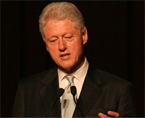equipment in an age of glass cockpits.
-
Engineers train on phased out aircraft built with dated technologies and materials.
The result: When qualified, graduates don’t match airline requirements
There are exceptions:
A small number of larger training institutions which offer fully professional and up to date training.
As well there are professional aeronautical universities offering a wide range of specialised training.
But No-where near enough to significantly fill the demand gap.
As well, manufacturers offer advanced training, but this is mostly limited in numbers and to clients.
Airlines train to meet some of their own requirements. but
- They are primarily in the transport business and only train their aviation professionals to the extent they must.
- They prefer to recruit from the market place.
- Often, their plans for growth outstrip their ability to train for their own requirements, even if they want to.
Which means they will not contribute much to the impending global shortage.
Gaining experience:
Once qualified, aviation professionals need to build experience before they are employable by airlines.
- For example, pilots can usually attain their commercial licence after about 200 flying hours. Airlines usually look for a minimum of 500 hours, preferably with training which suits their (usually) modern aircraft.
- This means pilots must somehow build their flying hours and gain state of the art equipment experience.
- This leads them to compete on relatively low salaries for a small number of jobs in general aviation.
Outside Western countries, aviation training opportunities are even harder to find.
- There is a dearth of aviation training institutions able to offer complete training.
- Often tight political borders and internal regulation restricts aviation training.
For example:
I understand there are numerous institutions offering pilot theory training in China, but only one which offers flight training. This has forced surging Chinese airlines to provide far more training in-house than their competitors elsewhere and this need is often met abroad.
The solution:
The solution is the creation of specialised aviation institutions and colleges.






